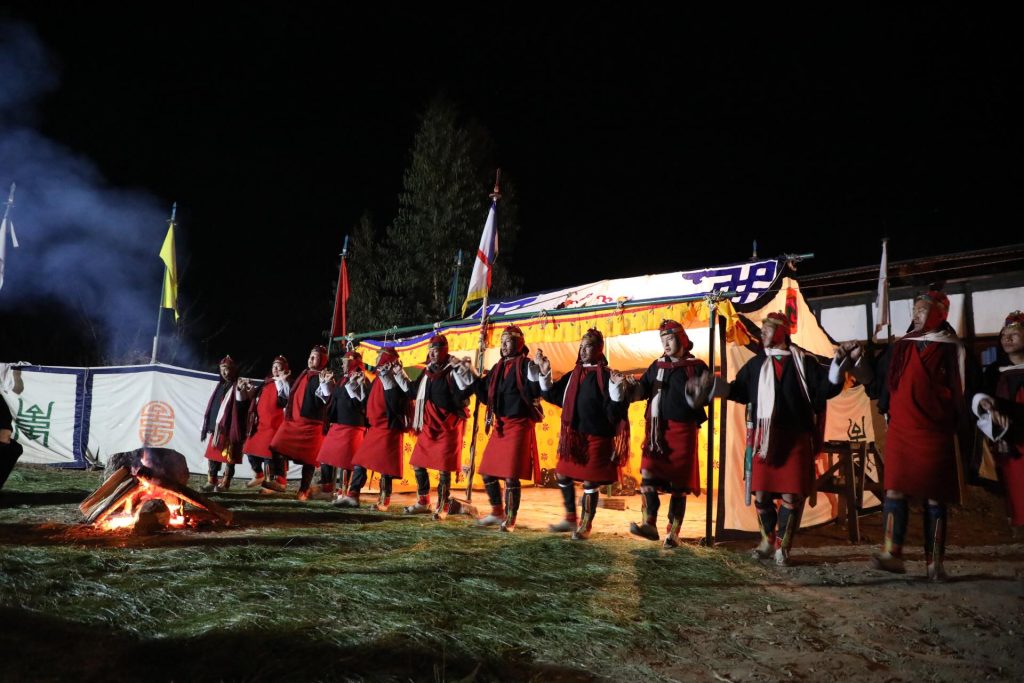Pazaps – Traditional Bhutanese Warriors
Zhabdrung Ngawang Namgyal unified Bhutan as a nation state and he was the one who gave Bhutan and its people the distinct cultural identity that distinguishes the country from the rest of the world.
During the 17th century, Tibetan forces seeking to seize a very precious relic, the Ranjung Kharsapani, invaded Bhutan. In that battle, Zhabdrung Ngawang Namgyal led the Bhutanese to victory over the Tibetans. And, to commemorate the victory, he introduced the Punakha Dromchhoe. Since then, the Punakha Dromchhoe (also known as Puna Drubchen) has become an annual event.

Every year, during the Punakha Dromchhoe, men of Wang-Tshochengay (eight great clans of western Bhutan) transform themselves into pazaps (warriors) and re-enact the war scenes from the past.
The festival is unique in that the pazaps or local militia men host a dramatic recreation of the scene from the 17th century battle, dressed in traditional battle gear. This reenactment harkens back to the time when in the absence of a standing army, men from the eight Tshogchens or great village blocks of Thimphu came forward and managed to expel the invading forces from the country. Their victory ushered in a period of new-found internal peace and stability.
Punakha Dromchhoe was first performed in 1639. Today, the pazaps in their traditional warrior garb gather at Punakha dzong before the Dromchhoe, pitch tents and set up war camps near the dzong.
The eight western clans– Kawang, Chang, Mewang, Baap, Kabjisa, Shengana, Tewang and Toeb contributed hundreds of pazaps, including eight zimpons or makpons (generals) and eight gups as zhabdrung’s representative during the war. Today, each gewog selects 17 pazaps including a zimpon and eight gups, who act as representatives of Zhabdrung and guide warriors at war.
Besides recreating the war scenes, there is also a demonstration of Norbu- Chu-shani or immersion of the relic into the Mochu. The upper part of a pazaps’ red dress resembles a kira. The lower part is folded as gho. The pazaps wear black jackets and khamar kabneys (scarf). They also wear tshoglham (traditional boots), helmet and dangle a patang (sword).
The zimpons wear the finest battle garb, a gho with magnificent patterns, a white skirt, with Dhar Naga (five-colored scarves) woven around their chests. They also wear heavy metal helmets decorated with flags. Hanging from their waists are resplendent swords.
The gups have to wear red robes, transforming into monks until the end of the Dromchhoe because they are the representatives of the dzong selected by Zhabdrung and sent as chiefs to guard each clan of warriors.
The Dromchhoe has a special significance for the people and the region that fought some of the greatest wars. It is because of this reason that people of Wang- Tshochengay celebrate the Dromchhoe every year.

